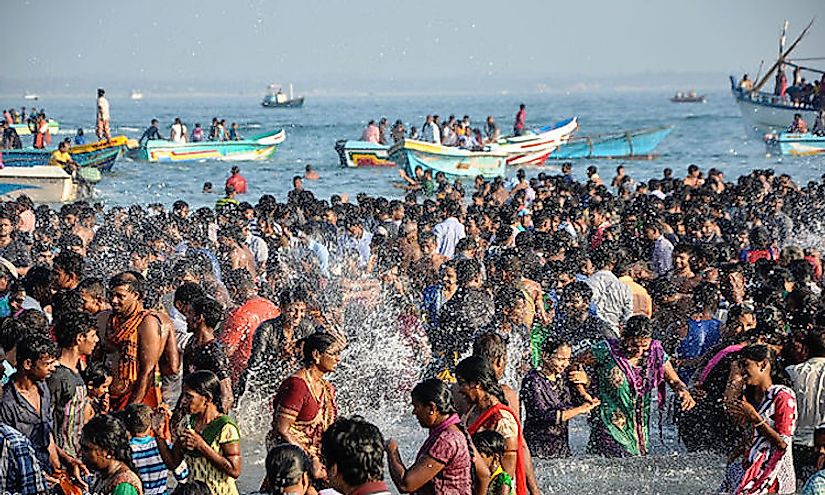The Population Of Sri Lanka

The Population Of Sri Lanka
74.9% of the population of the Sri Lankan population are Sinhalese, and Sri Lankan Tamils are the largest minority group. Sri Lanka is a multilingual, multicultural, and multi-religious country, as observed from its diverse society. The Island of Sri Lanka is characterized by a regional variation in regards to the economy, from tourism, agriculture, mining, fishing to manufacturing.
Vital Statistics Of The Population Of Sri Lanka
The most recent full census of Sri Lanka was carried out in 2012 and 20, 359, 4309 inhabitants were recorded, representing an annual growth rate of 1.1%. Sri Lanka has a high literacy rate at 97%, due to free education. In 2012, the unemployment rate for the economically active stood at 6.6% while the dependency ratio was recorded as 60.2%.According to 2015 statistics, 18.4% of Sri Lankans lived in the urban area, although the rate is projected to increase as Sri Lanka shifts from an agricultural economy to a production-based economy. The estimated fertility rate is 2.09 children for each woman. The HIV/AIDS adult prevalence rate is estimated at 0.03% while bacterial diarrhea and hepatitis A are the primary food and waterborne diseases common in the country.
Ethnicity Of The Population Of Sri Lanka
The largest ethnic group in Sri Lanka is the Sinhalese. The Sinhalese speak the Sinhala language, which is part of the Indo-European linguistic group. The ethnic group is believed to have migrated to Sri Lanka from northern India. The Sinhalese brought with them the agricultural economy, and a significant part of them continue to practice to the present day.
The Tamil ethnic group makes up about 11.2% of the total population. The Tamils migrated to Sri Lanka from Southern India, and their Tamil language was influenced by Indian linguistic elements. The Tamils observe the Hindu religion and have a different caste system from that of the Sinhalese. The Moors or Muslims claim a 7.1% share of Sri Lanka's population. Islam in Sri Lanka was brought by Arab traders who settled in the country and adopted the Tamil language. In a bid to escape persecution during Portuguese colonization, the Moors moved to the Central Highlands, where most of them remain. The Indian Tamils account for a 4.2% share of Sri Lanka's population. The ethnic group settled in Sri Lanka as plantation workers during British colonization. Burghers make up a small part of the population and trace their ancestry to European colonists and settlers.
Religious Practices By The People Of The Country
The most widely practiced religion is Buddhism at 70.2%. The introduction of Buddhism is credited to the Sinhalese upon their arrival from India. The Sinhalese are the largest observers of the religion, and even their culture is centered on the faith. The biggest minority religion is Hindu, with a 12.6% share of the country's population. The leading adherents of the religion are the Tamils, both the Sri Lankan and Indian Tamils. Islam is observed by a 9.7% of Sri Lanka's population. Roman Catholicism at 6.1% was introduced by the Portuguese, while Protestantism, observed by a 1.3% share of the population was introduced in by the Dutch and the British.
Cultures Of The People Of Si Lanka
A caste system exists in Sri Lanka, where the citizens are aware of status and social order. Relationships in Sri Lanka are firmly founded on hierarchies. Rituals and customs, some dating back for 2000 years, are an integral part of the country's culture. These aspects are portrayed in the numerous colorful festivals. The people of Sri Lanka are sometimes viewed as conservative, attributed to the major religions of the country, which are Buddhism and Hinduism. Sri Lankans are more often humble and respectful and delight in the simple things in life. The ceremonial food in Sri Lanka includes the Kiribath, a meal prepared by cooking rice in coconut milk and sweet oil cakes called Kawum. Music, art, and drama are also important aspects of Sri Lankan culture.







